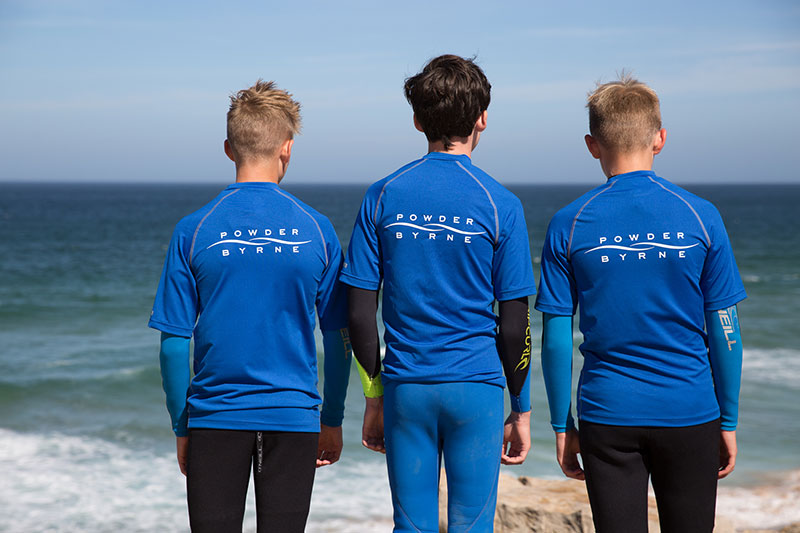Surfing in Sintra: Interview with Our Instructor

We recently launched our exciting new concept for the summer, Learn Together, and it’s all about enriching family experiences. Families are placing less and less focus on where they stay and more importance on the inspiring and educational experiences they can enjoy while on holiday. Of course, our clients will enjoy the loveliest hotels in the most beautiful locations, but now they can also enjoy learning a new sport together with their private instructor and all the healthy competition, fun, and laughter that it entails.
The Learn Together programmes are surfing, scuba, sailing, polo and cycling across a range of our incredible European resorts and they all involve morning sessions with your instructor before enjoying a more laid back afternoon back at your hotel. We chatted to our expert Learn Together Surf instructor in Sintra about this unique programme, which takes place on the world-renowned Guincho Beach.
1. What sort of waves does Guincho have to offer? Is it good for beginners and experts?
It has something to offer for all abilities. Providing it is surfed at the right tide, Guincho produces great conditions for beginners to stand for the first time on a surfboard with powerful, long-running white water to give you plenty of time to get to your feet. For those more advanced surfers, depending on conditions on the day there are plenty of bigger waves out back to hone your technique.
2. What will a typical morning’s lesson involve?
Once you’ve changed into your wetsuits, you will head to the water’s edge for a warm up. The warm up will consist of a small jog down the beach to get the blood flowing followed by a variety of stretches that are crucial for the movements performed in order to surf a wave.
When the warm-up is completed, there will be a short training session on the sand. For beginners, this will include an introduction to the basic concepts such as paddling to catch a wave, moving onto the technique for standing up.
Then the lesson will take to the water to put those skills and concepts to the test. This is where the real fun begins. For beginners, the instructor will be in the water without a board so they can help you manoeuvre your board and give you a helping hand to catch your first wave.
The rest of the lesson will be spent having fun in the water, catching waves and working on improving technique so that you can move onto bigger waves.
For more advanced surfers, the instructor may have their own board and paddle out with you with the aim of catching some of the bigger waves out the back to observe your technique in action in order to offer advice and subtle corrections to fine-tune your technique.
Once finished in the water, you will return to the beach with your instructor and discuss who caught the best wave!
3. What techniques will beginners be learning and what should their aim for the end of the week be?
Beginners will learn basic paddling position, how to paddle to catch a wave, the technique in order to stand up and finally the position to be in when actually surfing a wave.
There will also be important information about safety when surfing.
By the end of the week’s lessons, a beginner can usually expect to be able to paddle to catch a wave and stand up in order to ride it straight towards the beach.
4. What techniques can more advanced surfers expect to learn?
That would depend on the level of the surfer. First, it would be a case of looking at turning and manoeuvring the board. Moving on, we would work on catching clean waves before they break and turn into white water. This is a great feeling as you feel yourself dropping down the face of the wave picking up speed.
5. What sort of boards will beginners be using and what sort of boards could they progress on to?
The board will depend on various factors. Some of these include the ability of the surfer, height, weight, and confidence. A beginner will usually start with a large foam board offering stability in the water and helping with the process of standing up. Once you progress you can move onto a smaller board, which is a little more unstable but will allow you to ride the bigger waves.
6. What is your favourite thing about surfing?
For me, the best thing about surfing is the feeling you get when you first get on the wave and as you pop up you feel the power of the wave behind you. It’s a sport that can provide many thrills and happy moments. I also enjoy the fact it can be either a very individual thing or a great thing to do with friends.
7. What is the best thing about surfing at Guincho?
The best thing about surfing at Guincho is definitely the scenery. It is such a beautiful beach with a view of the surrounding hills and coastline. It’s also great to surf as you are safe in the knowledge that the lifeguards are keeping an eye on everything. There’s also an amazing surf atmosphere and it’s a great place to watch and meet other surfers, share stories and brag about who caught the biggest wave.
8. What is the best thing about teaching surfing?
The best thing about teaching is seeing the smiling faces when people stand up for the first time and ride a wave onto the beach. It’s a great feeling to see how happy they are and think ‘Wow! I helped them to do that’.
To find out more about our unique Learn Together programme and surfing in Sintra, call 020 8246 5300 or click here.










